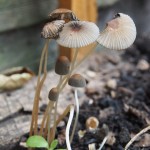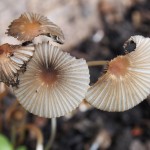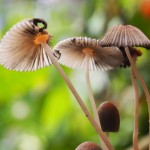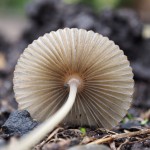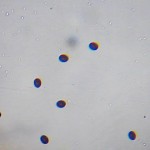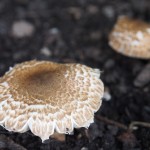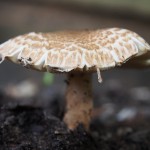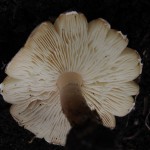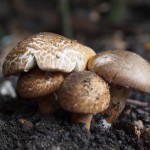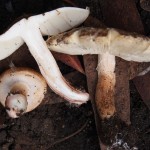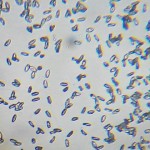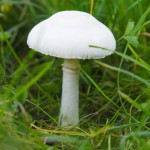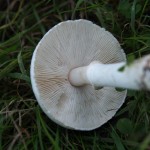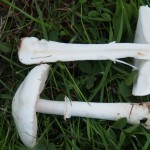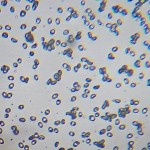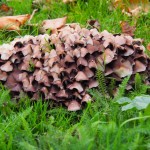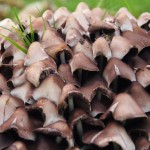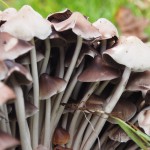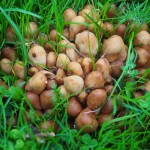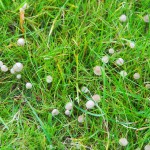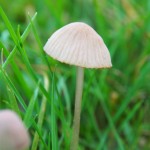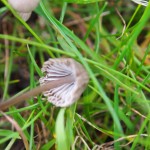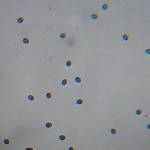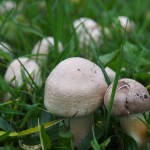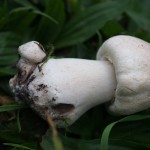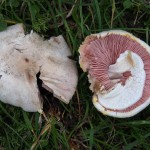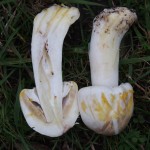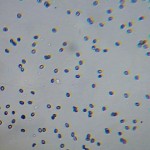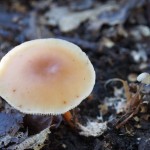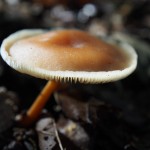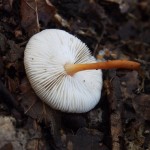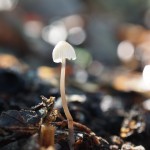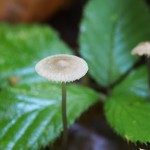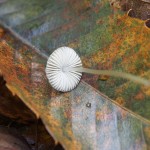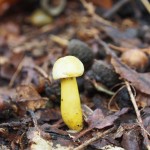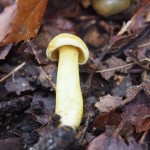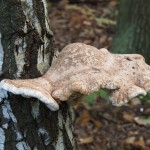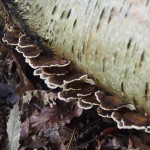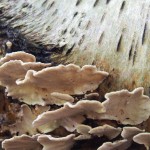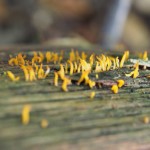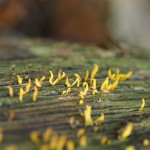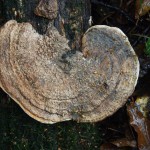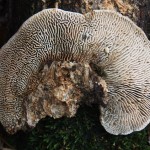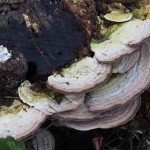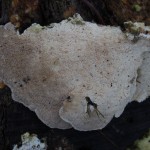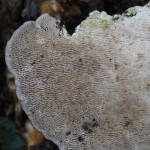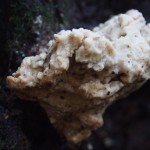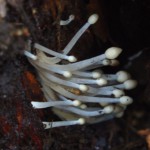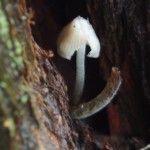1.
Bulbous Bonnet (
Mycena stylobates).
-
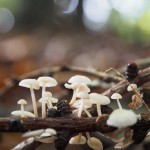
- 1. Bulbous Bonnet
-
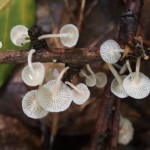
- 1. Bulbous Bonnet
-

- 1. Bulbous Bonnet
-
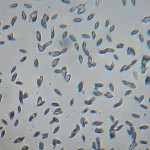
- 1. Bulbous Bonnet
Growing on twigs. Many on each twig. Cap up to 1cm. No smell. ID is fairly likely. Sporeprint white. Spores 7.5-11.5µ x 3-4.5µ.
2.
Type of Boletus.
-
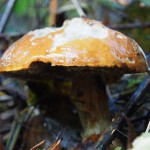
- 2. Type of Boletus
-
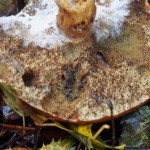
- 2. Type of Boletus
-
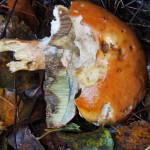
- 2. Type of Boletus
Growing under birch. One. Cap 10cm. Slimy cap. On cutting, tubes and cap above tubes turning green/blue. Thought this was a Slippery Jack but that doesn't seem to fit.
3.
Bitter Bracket (
Postia stiptica).
-
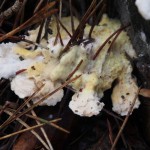
- 3. Bitter Bracket
-
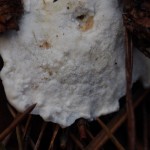
- 3. Bitter Bracket
-
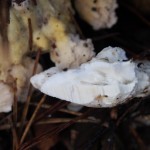
- 3. Bitter Bracket
Growing on pine log. Lots of brackets scattered over several logs. Up to 8cm across. Bottom half made of tubes up to 1cm long. Next time I'll taste this to check if it's very bitter, as reported. ID is fairly likely.
4.
Oak Mazegill (
Daedalea quercina).
-
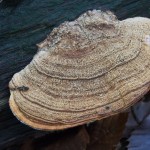
- 4. Oak Mazegill
-
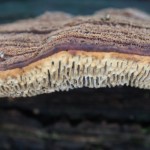
- 4. Oak Mazegill
-
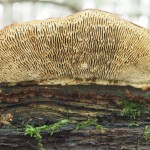
- 4. Oak Mazegill
Growing on log, possibly sweet chestnut. Several. 5-20cm across. Strong sweet mushroomy smell.
5.
Clustered Brittlestem (
Psathyrella multipedata).
-

- 5. Clustered Brittlestem
-
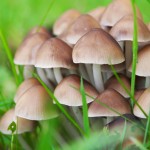
- 5. Clustered Brittlestem
-
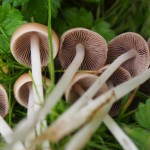
- 5. Clustered Brittlestem
-
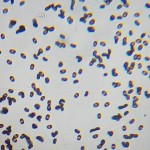
- 5. Clustered Brittlestem
Growing in grass moderately near to various trees. Several huge clusters. Cap 1-4cm. No smell. Young ones tan, then darkening and to grey. Sporeprint dark umber. Spores 6-7.5µ x 3-5.5µ.
6.
Common Cavalier (
Melanoleuca polioleuca).
-
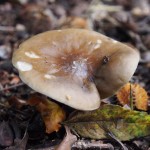
- 6. Common Cavalier
-
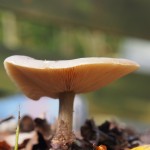
- 6. Common Cavalier
-
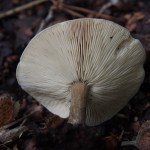
- 6. Common Cavalier
-
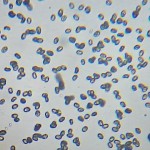
- 6. Common Cavalier
Growing on rotted leafmould. Three. Cap 5-7cm. Little smell. ID is fairly likely. Sporeprint white. Spores 6.5-8µ x 4-6.5µ.
7.
The Miller (
Clitopilus prunulus).
-
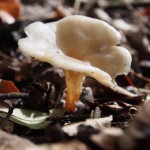
- 7. The Miller
-
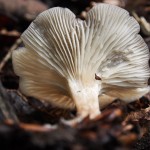
- 7. The Miller
Growing on rotted leafmould. Several scattered around. Cap 2-5cm. Mealy smell I think. Habitat isn't quite right for The Miller, but it fits in every other respect. Unfortunately forgot to get a specimen, so no spore picture. ID is very likely.
8.
Lilac Bonnet (
Mycena pura).
-
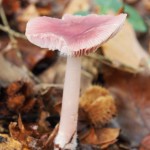
- 8. Lilac Bonnet
-
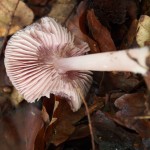
- 8. Lilac Bonnet
-
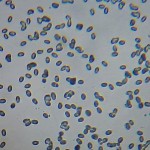
- 8. Lilac Bonnet
Growing on rotted leafmould. Three. Cap 5cm. Faint unpleasant smell, radish perhaps. I see this mushroom a lot and decided a while back that it's Lilac Bonnet, but perhaps it's Rosy Bonnet? ID is fairly likely. Sporeprint white. Spores 6.5-8µ x 4.5-5.5µ.
9.
Cep (
Boletus edulis).
-
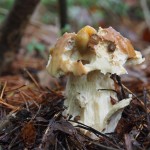
- 9. Cep
-
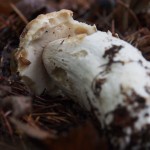
- 9. Cep
-
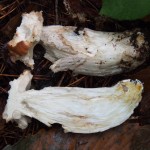
- 9. Cep
-
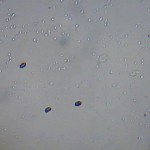
- 9. Cep
Growing next to a tiny alder in pine and sweet chestnut wood. One. Cap 7cm across, 12cm high. No smell. Covered with slugs - I had to pick off half-a-dozen. Very few spores were obtained so the spores data might be from contamination. Spores 8-8.5µ x 4.5-5µ.
10.
Lilac Bonnet (
Mycena pura).
-
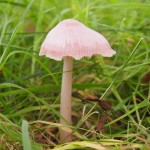
- 10. Lilac Bonnet
-
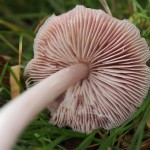
- 10. Lilac Bonnet
-
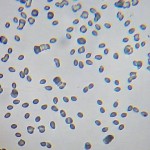
- 10. Lilac Bonnet
Growing in grass under oak. One. Cap 5cm across. 10cm high. Faint unpleasant smell, radish perhaps. ID is almost sure. Sporeprint white. Spores 6.5-8µ x 4-5.5µ.
11. Unidentified.
-
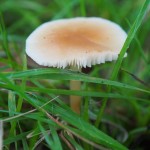
- 11. Unidentified
-
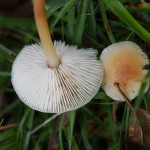
- 11. Unidentified
-
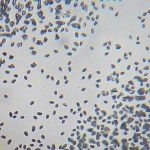
- 11. Unidentified
Growing in grass under oak. A few. Cap 1.5-3cm. No smell. Tough stem. Very small spores. Sporeprint white. Spores 4-5.5µ x 2.5-3.5µ.
12.
Type of Waxcap.
-
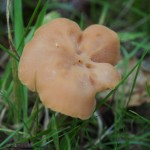
- 12. Type of Waxcap
-
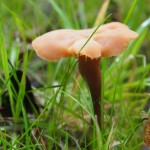
- 12. Type of Waxcap
-
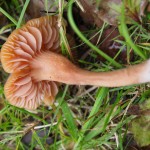
- 12. Type of Waxcap
-
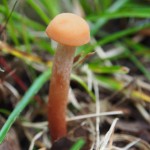
- 12. Type of Waxcap
-
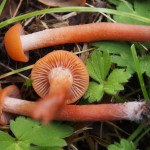
- 12. Type of Waxcap
-
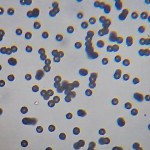
- 12. Type of Waxcap
Growing in grass under oak. Several. Cap 3-4cm of mature specimens. No smell. Tough stem, much thicker at top, hairy at bottom. This really does look like a waxcap but I can't pin it to any particular species. Small and large specimens must be the same species as they have identical spores. Spores are a bit curious - round and warty. Sporeprint white. Spores 7-9µ x 6-8µ.
13.
Tripe Fungus (
Auricularia mesenterica).
-
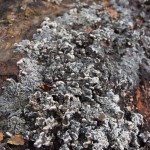
- 13. Tripe Fungus
-
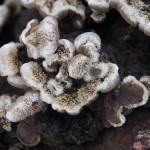
- 13. Tripe Fungus
-
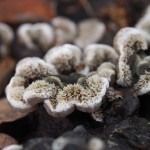
- 13. Tripe Fungus
Spread all over large log. No smell. Spongy/fleshy feel.
14. Unidentified.
-
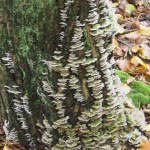
- 14. Unidentified
Spread all over standing dead pine. Up to 6cm across, 3cm deep. Thin and leathery.
15.
False Deathcap (
Amanita citrina).
-
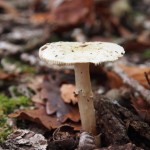
- 15. False Deathcap
-
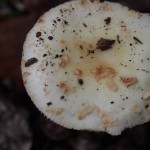
- 15. False Deathcap
-
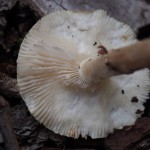
- 15. False Deathcap
-
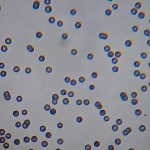
- 15. False Deathcap
Growing under oak. One. Cap 4.5cm. Smell of raw potato although not very strong. Sporeprint white. Spores 6.5-7.5µ x 6-7.5µ.
16.
Type of Russula.
-
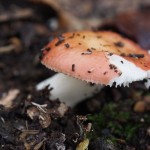
- 16. Type of Russula
-
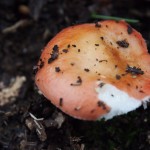
- 16. Type of Russula
-
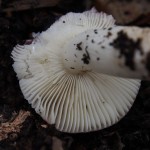
- 16. Type of Russula
-
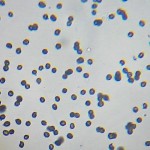
- 16. Type of Russula
Growing under oak. One. Cap 3.5cm. No smell. Very mild taste. Cap 2/3 peeling. Sporeprint white. Spores 5.5-8µ x 4.5-6.5µ.

